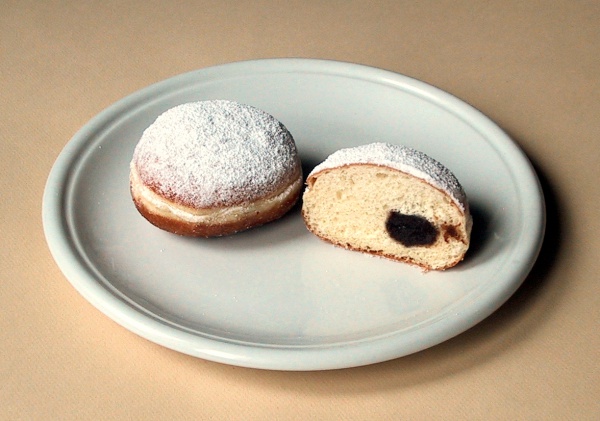Facts About Berliner
A Berliner Pfannkuchen, often simply called a Berliner, is a cherished German pastry comparable to a doughnut, but without the hole in the center. Crafted from a sweet yeast dough, these treats are fried to a golden hue and then filled with delightful marmalade or jam. They are typically sprinkled with powdered sugar, granulated sugar, or occasionally drizzled with icing. While the classic Berliner features fruit preserves, variations also include fillings such as chocolate, custard, or even advocaat (a creamy liqueur). Some versions are left unfilled.
Berliners are enjoyed year-round, but they hold a special significance during New Year's Eve and carnival celebrations in Germany. The enriched dough, incorporating eggs, milk, and butter, imparts a rich flavor. Deep-frying in lard results in the signature puffed-up appearance, and after frying, the pastries are injected with their fillings.
The name for this pastry changes depending on the region within Germany. You might hear it called Berliner Ballen, Pfannkuchen, or Krapfen, among other names. Variations of the Berliner can be found worldwide, with each culture incorporating unique fillings and names. In English-speaking countries, they are similar to jelly doughnuts or custard-filled doughnuts. In Portugal, they are known as bolas de Berlim and are often filled with creme pasteleiro, a type of custard. In Israel, a similar pastry called sufganiyah is a Hanukkah favorite.
There’s also a famous anecdote about U.S. President John F. Kennedy's speech in Berlin. When he declared, "Ich bin ein Berliner" some believed he inadvertently referred to himself as a jelly doughnut. However, this is a myth. Kennedy’s use of the phrase was grammatically correct and intended to express solidarity with the citizens of Berlin. The misconception has been thoroughly debunked, confirming that his statement was both accurate and heartfelt.

 Brazil
Brazil